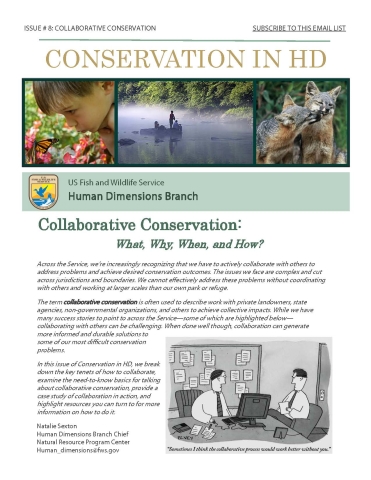
Across the Fish and Wildlife Service, we’re increasingly recognizing that we have to actively collaborate with others to address problems and achieve desired conservation outcomes. The issues we face are complex and cut across jurisdictions and boundaries. We cannot effectively address these problems without coordinating with others and working at larger scales than our own park or refuge.
The term collaborative conservation is often used to describe work with private landowners, state agencies, non-governmental organizations, and others to achieve collective impacts. While we have many success stories to point to across the Service collaborating with others can be challenging. When done well though, collaboration can generate more informed and durable solutions to some of our most difficult conservation problems.
In this issue of Conservation in HD, we break down the key tenets of how to collaborate, examine the need-to-know basics for talking about collaborative conservation, provide a case study of collaboration in action, and highlight resources you can turn to for more information on how to do it.